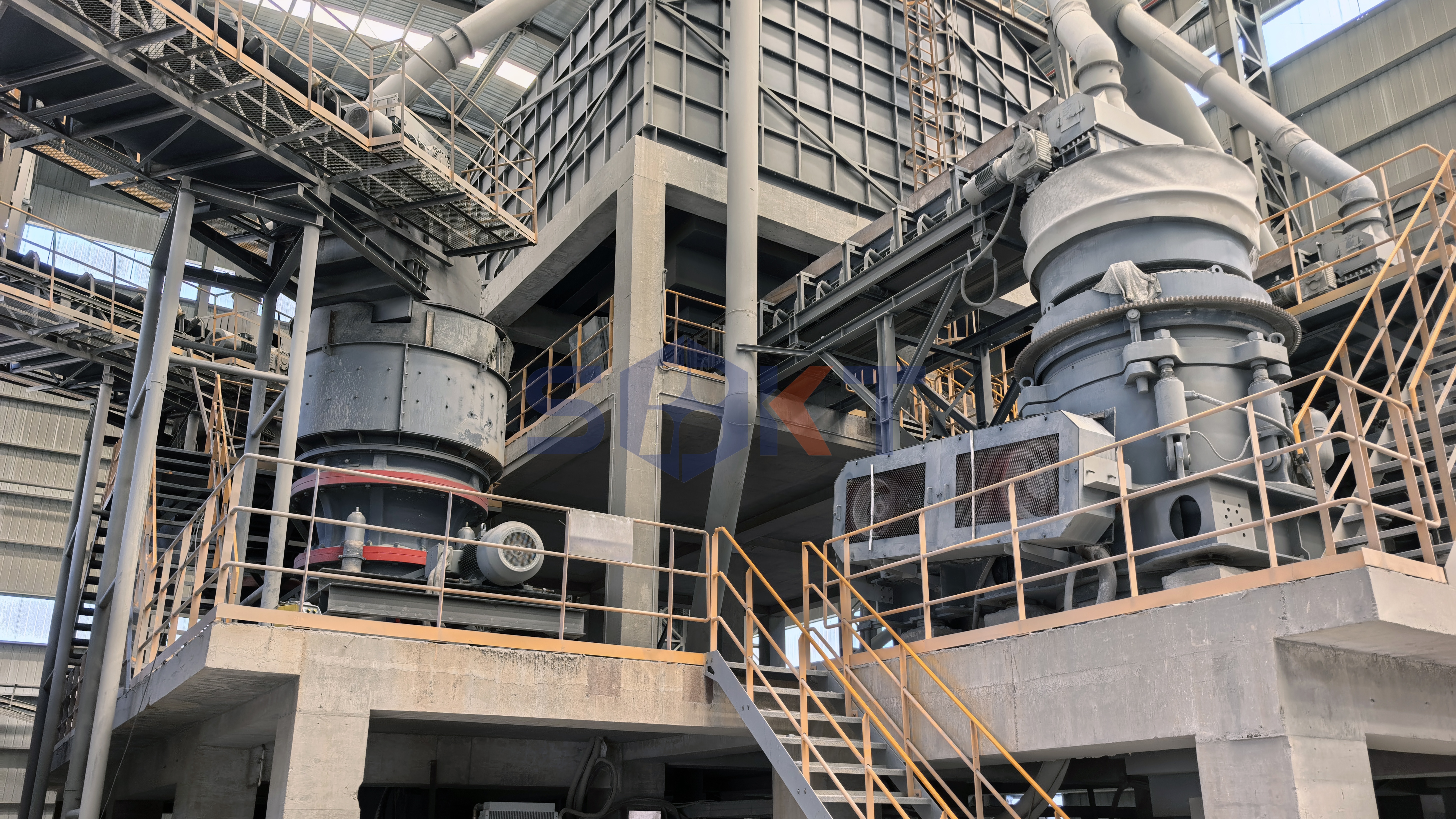
During the crushing process, raw material characteristics are one of the key factors influencing product particle size. Their physical and chemical properties directly affect the crushing difficulty, crushing method, and particle distribution. This article will analyze the impact of raw material characteristics on product particle size from six key perspectives and provide strategies for addressing this impact.
I. Hardness and Compressive Strength
Influence Mechanism
Higher hardness (e.g., Mohs hardness ≥ 6)
Requires greater crushing force, resulting in a coarser product particle size under the same equipment parameters and increased equipment wear (e.g., jaw plate and hammer wear rates increase by over 30%).
Low-hardness ores (e.g., fluorite with a Mohs hardness of 4)
Lower crushing energy consumption tends to produce fine particles, but insufficient crushing force may lead to uneven particle size distribution.
Countermeasures
1. Equipment Selection to Match Hardness
High-hardness ores (e.g., iron ore): A cone crusher (laminated crushing, high crushing force) is preferred. The discharge opening can be set to 15-30mm, and a fine-crushing cone crusher can be used to achieve a particle size of ≤10mm.
Low-hardness ores (e.g., fluorite): An impact crusher (impact crushing, high fines content) can be used. Increase the rotor speed to 1500 rpm and set the screen aperture to 5mm to control fines. 2. Adjusting the Staged Crushing Ratio
For high-hardness ores, increase the coarse and medium crushing ratios (e.g., increasing the coarse crushing ratio from 5 to 7) to avoid excessive load in the fine crushing stage.
II. Mineral Structure and Dissociation Characteristics
Influencing Mechanisms
Ores with well-developed bedding (e.g., schist-type fluorite)
Fractured ores tend to fracture along bedding planes during crushing, resulting in uniform product particle size and a high fines content (5mm particles can account for over 60%).
Ores with a dense, massive structure
Fractured ores require more internal chemical bonds to be overcome during crushing, resulting in coarse particles and flake-like particles (the flake-like content can reach 25%) and a low overcrushing rate.
Ores with Fractures
Fractured ores reduce crushing difficulty, but uneven distribution of fractures can lead to product particle size fluctuations (e.g., the proportion of 3mm particles in a batch of ore fluctuates by ±15%). Countermeasures
1. Optimize the crushing chamber configuration
For ores with well-developed bedding: Use an impact crusher (using impact energy to crush along the bedding) and a circular vibrating screen (with a 20° screen angle) to improve fine particle screening efficiency.
For dense ores: Use a cone crusher (laminated crushing + slow extrusion) combined with a vertical shaft impact crusher (VSI) to reduce needle-like particles (controllable to ≤10%).
2. Pre-screening to remove fissures
Pre-screening (10mm aperture) can be used to separate fragile fine particles and avoid over-crushing.
III. Moisture Content and Mud Content
Influencing Mechanism
Moisture content ≥ 8%
Fine particles tend to agglomerate into “mud clumps,” clogging the crushing chamber and screen (e.g., vibrating screen penetration drops from 85% to 50%). This results in the inclusion of fine mud in the coarse particles of the product, resulting in a coarser effective particle size. Sticky minerals (such as clay-containing fluorite) agglomerate to form a “buffer layer,” reducing the efficiency of crushing force transmission and increasing the proportion of coarse particles by 20%-30%.
Mud content ≥ 15%
Mud fills the gaps in the crushing chamber, hindering effective crushing of coarse particles. Furthermore, it is difficult to distinguish between mud and qualified particles during screening, resulting in a lower product particle size yield.
Countermeasures
1. Drying and Ore Washing Pretreatment
High-moisture ore (such as open-pit fluorite): Pre-dry in a drum dryer (inlet temperature 600°C, outlet moisture content ≤5%).
High-mud ore: Use a trough washer combined with a spiral classifier to remove 2mm of mud (mud content ≤5% after washing) to prevent interference with crushing and screening.
2. Anti-sticking Design
Apply an anti-stick coating (such as polytetrafluoroethylene) to the inner wall of the crushing chamber. Use a large-aperture polyurethane screen (e.g., 8mm aperture, increasing the open area to 75%) in the screening machine and install an ultrasonic screen cleaning device.
If you’re interested in setting up a stone crushing production line, please contact Shengbang Machinery via WhatsApp at +8613949025317 for more information!
Fill in the information and we will contact you as soon as possible